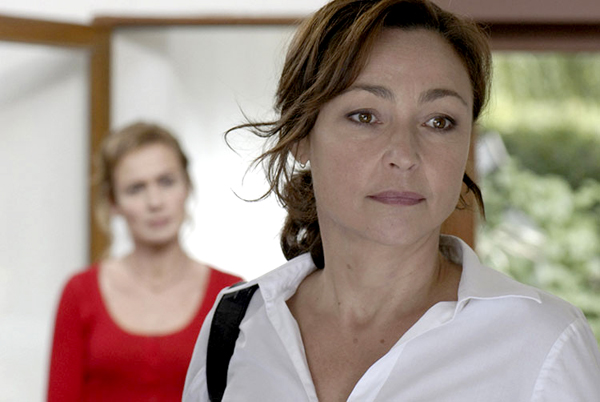|
Reviews of Recent Independent, Foreign, & Documentary Films in Theaters and DVD/Home Video

ANGEL OF MINE In the proverbial perfect world, the highly prolific and award-winning French actress Catherine Frot would be as acclaimed on this side of the Atlantic as many of her compatriots. With soft, malleable features, she transformed from a ditzy airhead (Chaos) to a high-strung control freak in The Page Turner, a psychological thriller equally as subdued and absorbing as her new film, Angel of Mine, which was inspired by a true story. The key to her appeal is that she makes it look so easy. In an ideal match, she’s directed here with the sleight of hand by Safy Nebbou. His camera stays out of her and co-star Sandrine Bonnaire’s way, wisely saving the close-ups for when they are truly needed, and even then keeping a distance. His tactful, you could even say graceful, direction is one reason why the film refrains from becoming overheated—the material would be ripe for obvious shadings and made-for-Lifetime melodrama. The film begins deceptively tranquilly, with Frot’s Elsa at a shopping mall (it could be anywhere in America but is actually set in suburban France), but shortly afterwards she argues with her soon-to-be ex over the custody of their son, which sends her to her medicine cabinet full of pills. After accompanying a friend for a wedding dress fitting, she drives onward to pick up her son at a birthday party. There, searching for 10-year-old Thomas, she’s startled at the sight of a pretty seven-year-old girl in a fairy princess outfit playing hide-and-seek. Driving back home, she casually asks her son about the girl, Lola, and by the next afternoon she’s waiting outside of Lola’s school. The following morning, she finally gets some badly needed sleep, slouched in her car, again parked in front of the school. The film works best as a mystery. Is Elsa stalking? Why is she lying to her family and then finagling her way into the home of Lola’s family and befriending the mother, Claire (Sandrine Bonnaire). (If you recall the Agatha Christie chestnut The Mirror Crack’d, you’re in the ballpark as to Elsa’s motivation.) And then the tension begins, including a nerve-racking ballet recital. In this impeccably edited scene, Nebbou interweaves three points of view—Elsa’s, Claire’s, and Lola’s. The set-up may bring back mixed feelings of
the short-lived woman-as-psychotic-monster thrillers of the late ’80s
and early ’90s, though without the prurient sexual overtones or misogyny, but
with a specter of woman-on-woman violence. The film remains levelheaded
largely due to a restrained musical score and
acting that steers clear of hysteria.
Elsa’s never depicted as a fiend—though she’s at times loopy, out of
control, obsessive, vulnerable as she’s unsettling. Then the film takes
a turn where Frot deliberately steps aside, becoming almost placidly and
strangely sphinx-like, and the spotlight shifts to
Bonnaire. Thanks to her, the psychological drama becomes something of a
tearjerker (though too neatly wrapped up). Kent Turner
|

